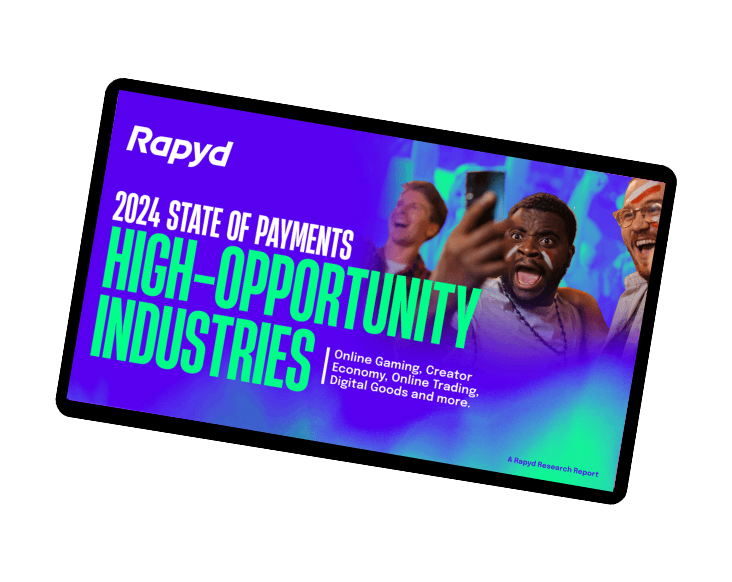2025 is shaping up to be a big year for payments, driven by rapid tech advancements, regulatory shifts, and evolving consumer expectations. And while (AI) will continue to play a pivotal role in reshaping the industry, it’s just one of several key trends that will impact how businesses and consumers approach payments. From AI-driven automation to the rise of stablecoins, and increasing regulatory pressure, the payments landscape is evolving rapidly.
This article breaks down six major trends reshaping payments as we look ahead to the new year. Regulatory influence, stablecoins, and fintech mergers are just a few dynamics to watch. Whether you’re in payments, financial services, or any business using payments as a strategic advantage, here are the trends to gain a competitive edge:
1. AI: The New Standard in Fintech
Artificial Intelligence (AI) is no longer just a buzzword in fintech; it’s becoming the driving force behind the industry’s most significant innovations. From customer onboarding to transaction monitoring, AI is revolutionising the way businesses operate by making processes faster, more secure, and more personalised. Its ability to analyse vast datasets in real time is enabling smarter fraud detection, compliance automation, and more dynamic user experiences.
AI’s impact on payments will be far-reaching:
- Fraud Detection and Prevention: AI’s predictive capabilities will be critical in detecting fraudulent patterns before they occur, helping businesses stay ahead of evolving threats. Advanced AI models can analyse behavioural biometrics—such as typing speed, swipe motions, or how a customer holds their device—to identify anomalies, making fraud detection even more precise. As fraudsters also adopt AI to design more sophisticated attacks, companies will need to continuously train AI models to stay ahead.
- Hyper-Personalisation: AI will tailor payment options, incentives, and checkout experiences to individual customers, enhancing satisfaction and boosting conversions. By analysing past behaviours and preferences, AI-driven predictive analytics will recommend the right payment methods and create personalised incentives at checkout, leading to increased sales and loyalty.
- Biometric and Invisible Payments: Voice recognition, facial ID, and other biometric payment methods will allow for invisible, frictionless transactions. AI will enable these payments to happen seamlessly in the background, improving customer experiences by reducing checkout times and eliminating unnecessary steps.
- Operational Efficiency: AI will streamline back-office functions such as payment reconciliation and fraud monitoring, allowing businesses to operate more efficiently. By automating repetitive tasks and flagging discrepancies in real-time, AI will reduce manual work, ultimately improving cash flow management and lowering costs.
By 2025, businesses that fail to integrate AI into their payment processes risk falling behind. AI will be indispensable for optimising processes, fighting fraud, and enhancing customer satisfaction.
2. Regulatory Pressure: U.S. Trends Will Cascade Globally
As AI rises in prominence, regulatory scrutiny on how it’s used in financial services will intensify. Particularly in the U.S., consent orders and new regulations are signalling the end of the “wild west” era for fintech. The Consumer Financial Protection Bureau (CFPB) is tightening regulations on areas like “junk fees” and buy now, pay later (BNPL) services, which has prompted similar actions by the UK’s Financial Conduct Authority and the European Union.
The complexity of regulations will demand businesses not only to innovate but also ensure compliance—and AI will play a vital role in this, automating compliance tasks like Know Your Customer (KYC) and Anti-Money Laundering (AML) checks. AI’s ability to track transactions and enforce real-time fraud prevention can also help businesses stay ahead of changing regulatory environments.
Once known for its agility and innovation, the fintech industry now faces a more regulated future, where AI-driven compliance tools will be essential to navigating global operations.
3. The CFO’s Office: A New Focus for Payments Solutions
As AI drives operational efficiency, the role of the Chief Financial Officer (CFO) is evolving and becoming more on digital tools and automated systems. Historically served by giants like SAP and Oracle, the CFO’s office is now a key target for fintech innovation. Startups and established platforms alike are developing specialised tools for financial modelling, cash flow management, and automated accounts payable and receivable processes.
AI enhances this shift by providing CFOs with real-time insights and predictive analytics to forecast financial outcomes, manage cash flows more accurately, and identify cost-saving opportunities. This transformation is empowering CFOs to move beyond traditional financial oversight into a more strategic role that focuses on driving business growth and innovation.
To capture this market, payment platforms should integrate with the specific tools CFOs are adopting, such as:
- Adaptive Insights or Anaplan for financial modelling and forecasting
- Tesorio or Kyriba for cash flow management
- Tableau or Power BI for data analytics and reporting
- Expensify or Concur for expense management
These tools, powered by AI, will increasingly automate back-office operations, giving CFOs the freedom to focus on high-level strategic planning and financial innovation. For payment platforms, aligning with these solutions presents an opportunity to cater to the evolving needs of financial leaders, helping them streamline workflows and optimise their company’s financial health.
4. Stablecoins: Moving from the Edge to Mainstream Use Cases
Stablecoins are shifting from niche crypto projects into mainstream finance. Their ability to facilitate transactions quickly and cost-effectively makes them attractive, particularly for cross-border payments. As we move into 2025, stablecoins will be increasingly used for everyday transactions, giving businesses a more efficient way to manage liquidity and settlements.
In 2025, stablecoins will be increasingly used in everyday transactions, particularly cross-border payments. This trend highlights the growing importance of digital currencies and the need for businesses to stay informed about their potential applications.
Several major banks have started incorporating stablecoins into their operations and services:
- JPMorgan Chase pioneered this space with its JPM Coin, a permissioned, blockchain-based stablecoin pegged to the US dollar. JPMorgan customers use it to facilitate instant settlements and manage internal liquidity.
- This year, BBVA incorporated USD Coin (USDC) into its crypto asset service in Switzerland, allowing institutional and private banking clients to exchange, custody, and automatically convert USDC in near real-time.
- Japan’s major banks—MUFG, SMBC, and Mizuho—are participating in Project Pax, a cross-border payment system using stablecoins instead of correspondent banks. The system integrates with SWIFT messages, enabling corporate clients to make trade payments seamlessly.
5. Consolidation in the Fintech Industry: A Surge in M&A Activity
With AI taking centre stage, we’ll also see significant mergers and acquisitions (M&A) activity in the fintech space. As competition intensifies, larger companies will acquire smaller players to expand their market share and technology stacks.
AI’s role in optimising post-merger integrations will be crucial, as companies look to streamline operations and manage more complex payment ecosystems. This consolidation trend will reshape the competitive landscape, and businesses must be prepared to adjust their strategies accordingly.
6. Orchestration: The Growth of Payment Routing
What was once referred to as “smart routing” in payments is evolving into a broader concept known as orchestration. In 2025, payment orchestration will go beyond simply optimising transaction flows across multiple payment service providers (PSPs). It will encompass the entire payment ecosystem, allowing businesses to seamlessly integrate various services such as onboarding, transaction monitoring, and compliance across different geographies and use cases.
AI will drive orchestration by making real-time decisions about the best routes for transactions, factoring in cost, speed, and security. This optimisation will allow businesses to offer faster, cheaper payments across geographies, all while maintaining compliance with local regulations.
Increased competition between orchestration platforms will make it more important than ever for orchestrators to build partnerships with card acquirers and payment platforms that offer a wide variety of services and support merchants across a broad spectrum of industries.
Secure Your Future
2025 reflects a broader shift towards more sophisticated, integrated, and regulated financial ecosystems, with AI leading the way in shaping this future. As regulatory pressures increase and AI becomes commonplace, companies will need to balance innovation with compliance, potentially leading to a more stable but also more competitive landscape.
The rise of stablecoins and the growing importance of the CFO’s office in fintech decisions highlight the convergence of traditional finance with new technology. The trend towards consolidation through M&A activity suggests that the industry may see more powerful, multifaceted fintech entities. With consolidation and advanced payment orchestration, we can expect to see more efficient financial services. However, we must remain alert. New improvements however mean new challenges in market competition and data privacy as we look forward to 2025’s fintech advancements.
Gaining a competitive edge can be as simple as choosing a payments platform, like Rapyd, to access experts in global payments and fintech. Rapyd’s integrations across payment methods, broad industry exposure, and international business presence, give us unique insights into emerging payment trends. It’s an honour to help our partners and customers achieve strategic advantages in their markets through our expertise and support.





